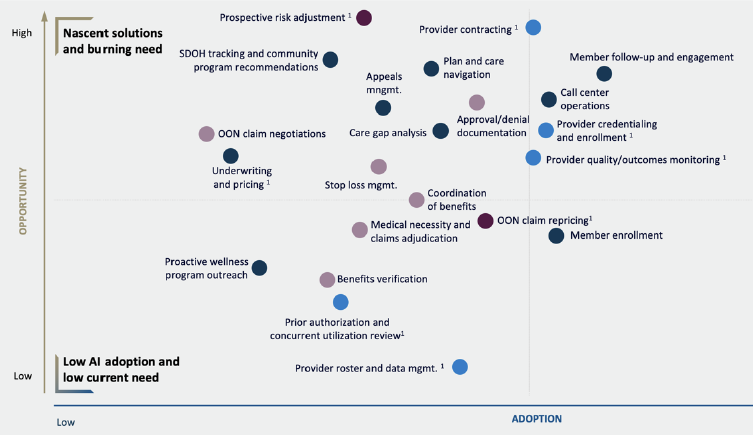Just in
Click Therapeutics this morning announced that the
Food and Drug Administration cleared its digital therapeutic for people with migraines. It's the second Click product to receive marketing authorization. Last year, the FDA
cleared a digital treatment for depression jointly developed by Click and
Otsuka.
policy
Trump cuts threaten community health modernization
Layoffs at the federal health department included employees who'd been working on a technology upgrade meant to help the government keep tabs on the billions of tax dollars it spends on community health. Called UDS+, the update would make it easier for community health centers to report health outcomes and demographic data to the government. As STAT's Brittany Trang reports, as many as 1,200 of roughly 1,400 centers were set to go live with the upgrade next month.
The recent government cuts included dozens of employees at the Health Resources and Services Administration, including many who have been working on the project for years. Following the reductions, some were asked to come back to finish the work, but its future remains in limbo.
Read more here
Artificial intelligence
Medicare advisors, lawmakers wrestle with payment for AI
Developers of software for treating and diagnosing diseases view Medicare reimbursement as key to their business prospects. It's a huge potential market and can play a role in streamlining technology adoption by the broader health care system.
- During a public meeting of the Medicare Payment Advisory Commission last week, the program's independent advisors heard a presentation on payment for software as a service, including algorithm-based medical devices, and for digital therapeutics. Reimbursement for a subset of digital therapeutics is new this year, so we don't have any data yet.
- But the SaaS situation is pretty interesting. Medicare has paid for software as a service since 2018, and as a whole it seems like there's not a lot of fee for service use so far given the tremendous scale of Medicare. One standout example is a product meant help evaluate coronary artery disease. In 2023, there were 14,000 hospital outpatient uses at a cost $12.7 million. No other software was used more than 570 times in a outpatient setting. Under payments to physicians, no software had more than 3,600 uses or more that $200,000 in payments. In in-patient settings, SaaS is usually bundled into payments for treating diagnoses, but there were $3.2 million in new technology add-on payments.
- Senators Mike Rounds (R-S.D.) and Martin Heinrich (D-N.M.) last week introduced legislation that would establish Medicare payment for novel "algorithm-based healthcare services" that have been cleared by the Food and Drug Administration. The legislation follows many other efforts to establish automatic payment for new medical devices following an FDA greenlight. Developers complain that without such a rule it can take a long time for Medicare to come around to paying for new technologies. Critics point out that the FDA's job is to determine safety and effectiveness of medical devices, where CMS officials determine whether it's reasonable and necessary to pay for them.
business Where's the health AI opportunity for startups?

A new survey of hundreds of payer, provider, and pharma executives finds that that AI is a big priority — no surprise there. But where many organizations would be willing to work with startups, only "15% of projects are currently being developed at and procured from startups." Instead, organizations are developing AI internally or working with incumbents.
To help, the authors from Bessemer Venture Partners, with support from little known concerns Amazon Web Services and Bain & Company, developed what they call an "AI Dx Index" which scores 59 different tasks across sectors in terms of the opportunity for automation and the level of adoption for solutions. Have a look at the chart of payer opportunities above. (I had to crop it a bit to make it legible here.) The best opportunity for startups is in the top left corner, where there's a high need and low adoption. Risk adjustment, apparently, is begging for an AI fix. In another chart, the hot use case of the moment, AI clinical scribes, is seen in the middle towards the right since there's already a lot of adoption but the need is still substantial.
Read the whole report here


No comments